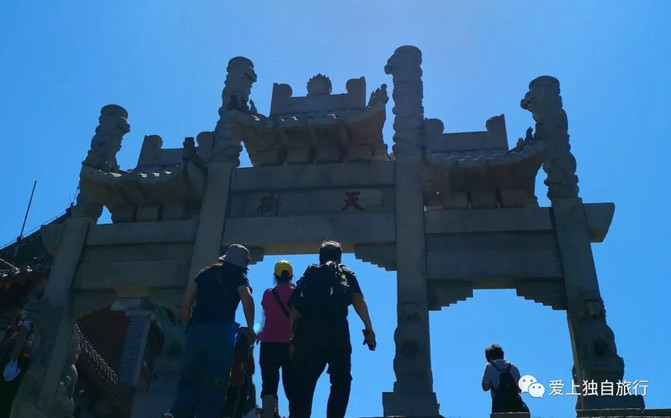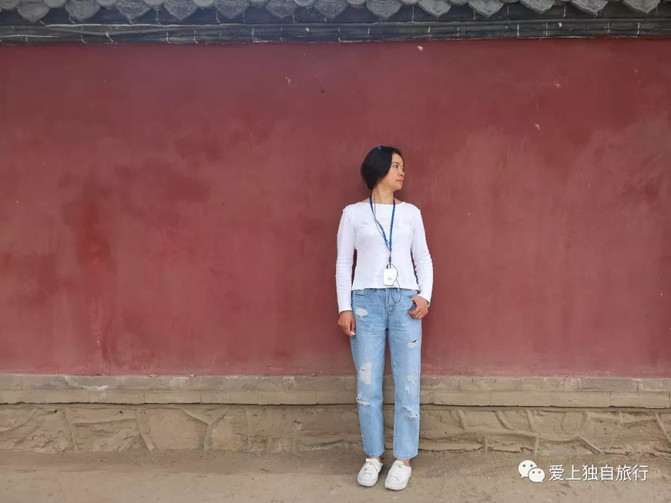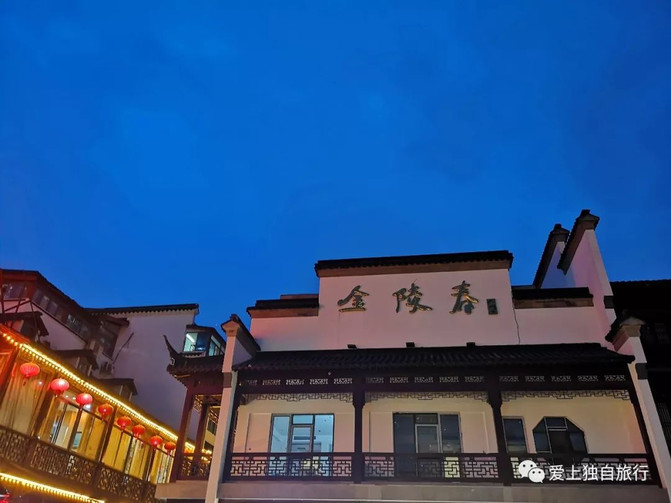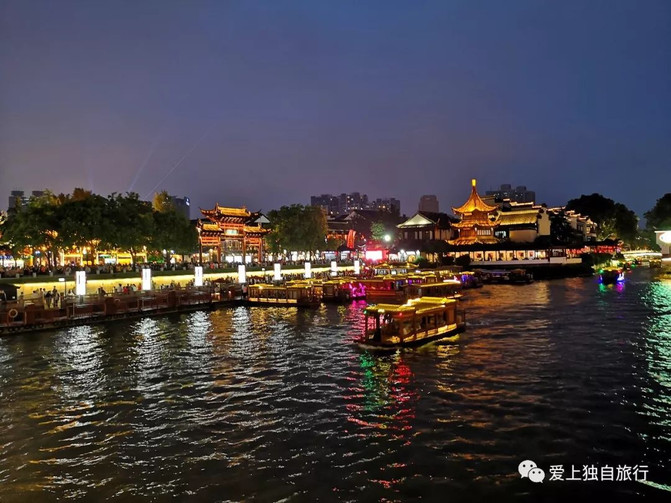Taishan @ Nanjing
Time in Qingdao ended, my best friend went home left, and I went right to Mount Tai to start a journey alone.

At 9:32 a.m. on May 22, the Qingdao-Tai 'an high-speed railway took 3 hours and 22 minutes to reach Tai' an.

Staying at Tai 'an Wanda Plaza, although it is a little far away from Mount Tai Scenic Area, transportation and accommodation are very convenient.

Climb Mount Tai on May 23
Mount Tai is the first of the Five Mountains. The Five Mountains are the general term for China's five famous mountains. They generally refer to the Eastern Mountain Mount Tai (located in Shandong), the Southern Mountain Mount Heng (located in Hunan), the Western Mountain Mount Huashan (located in Shaanxi), the Northern Mountain Mount Heng (located in Shanxi), and the Middle Mountain Mount Songshan (located in Henan).
Enter the Taishan Scenic Area from Tianwai Village and take a sightseeing bus to Zhongtian Gate. There are two routes to travel here. One is to travel on the downward route to Hongmen Wanxian Tower (the entrance of the pedestrian climbing route), and after leaving the scenic area, visit Dai Temple. The other is the uplink route to Nantianmen Gate to climb Mount Taishan Yuhuangding. Looking at the weather forecast, the weather will not be very good tomorrow, so I decided to climb the top of Mount Tai today.


The Taishan Scenic Area ticket is 145 yuan, including Taishan Scenic Area and Dai Temple, and is valid for two days. You need to purchase separate tickets for the sightseeing bus (Tianwai Village entrance to Zhongtianmen) and the cableway cable car (Zhongtianmen to Nantimen)(30 yuan per trip for the sightseeing bus, 80 yuan per trip for the cableway, and 140 yuan for a round trip).
I left early today and arrived at Zhongtian Gate at 9 o'clock.


Blooming sophora flowers on the mountain



Zhongtian Gate was built in the Qing Dynasty and is a two-pillar single-door stone workshop. This is halfway to the summit and is also a must-pass place up and down.






Take a look at this climbing ladder (from the starting point of climbing the road: Red Gate through Zhongtian Gate to Nantianmen Gate, with a total length of 5.5 kilometers. Almost all of it is a road, with a total of 6290 steps), Zhongtian Gate is in the middle, Zhongtian Gate to Nantianmen Gate is estimated to have about 3000 steps. I am glad I chose the cableway to go up the mountain.

Tianjie Yuanjing

Climbing the Nantian Gate, you will enter the wonderful area of Mount Tai, namely the Daiding Tourist Area.
The main landscapes in the Miao District include: Nantianmen Gate, Yueguan Peak, Tianjie, Baiyun Cave, Confucius Temple, Bixia Temple, Tang Cliff, Yuhuangding, Tanhai Stone, Riguan Peak, Zhanlu Terrace, etc.
Nantianmen Gate was called "Tianmen Pass" in ancient times. It was founded by Taoist Zhang Zhichun in the fifth year of the Central Tong of the Yuan Dynasty (1264). It is a cross-road gate-style building and is a landmark building in Mount Tai.


Crossing Sky Street


Yueguan Peak, the ancients said that you could look at the State of Yue, hence the name Yueguan Peak. In the Yueguan Pavilion on the top of the mountain, when the weather is clear, lights from thousands of homes in Jinan can be seen at night.


Yuhuangding is the "East Mountain"-the top of the main peak of Mount Tai. It is named after the Jade Emperor Temple on the summit. The Yuhuang Temple was built without reference, but it was rebuilt during the Chenghua period of the Ming Dynasty.

Workers repairing the Jade Emperor Temple


Wordless stele: It is named because it is not engraved with a word.
The square pillar, with a height of 5.2 meters, was established by Emperor Wu of the Han Dynasty and marks the seal of Mount Tai.

To the southeast of the extreme top of Mount Tai, there is a flat cliff. Standing on it, you can view the State of Lu from afar, hence the name Zhanlu Terrace.
It is said that Confucius once visited the State of Lu here

Confucius Temple


Mount Tai is also known as the "Famous Mountain of Chinese Calligraphy" and has always been known as the "Five Mountains are the only ones".





On May 24, the weather was really not good today, so I visited Dai Temple as planned.
Dai Temple was built in the Han Dynasty and was the place where emperors of past dynasties held Buddhist ceremonies and worshipped the God of Mount Tai.
Dai Temple, together with the Forbidden City in Beijing, Sankong Temple in Qufu, Shandong Province, and Waiba Temple in Chengde Summer Resort, are also known as the four major ancient architectural complexes in China.















I rented a voice explanation machine and followed the illustrated route to get a general idea.





On May 25, Mount Tai went to Nanjing. He also chose to take the high-speed train and arrived in Nanjing in less than two and a half hours. Now the high-speed train is really convenient.
I have visited several representative ancient towns in Jiangsu before, but I have never been to Nanjing and Suzhou. I will leave the next time to Nanjing and Suzhou!
Confucius Temple Qinhuai Scenic Belt: With Confucius Temple as the core and the ten-mile Qinhuai as the axis, it has rich history and humanities. The Qinhuai River is the cradle of Nanjing's ancient civilization and Nanjing's mother river. It is very famous in history. This place has always been "the smoky and moonlit area of the Six Dynasties, where gold powder gathered." It is also a prosperous place for ten generations."The clothes and cultural relics are flourishing in the south of the Yangtze River; the literary talent is romantic, and it is best in the sea." It is known as "China's first historical and cultural famous river."


Qinhuai River Night






Jiangnan Gongyuan is the only professional museum in China that reflects the Chinese imperial examination system. It is the center of the Chinese imperial examination system, the center of the Chinese imperial examination culture and the center of the Chinese imperial examination cultural relics collection.




At each time of the day, the scenes taken from different perspectives have different feelings.




Another famous scenic spot in Nanjing, Zhongshan Scenic Area: With Sun Yat-sen Cemetery as the center and relying on the Ming Xiaoling Mausoleum and Linggu Temple, there are more than 200 scenic spots of various types and 84 scenic spots for visiting.
Sun Yat-sen Mausoleum is the tomb of Dr. Sun Yat-sen, the great pioneer of modern democratic revolution in China, and its affiliated commemorative buildings, covering an area of more than 80,000 square meters.
Panorama of Sun Yat-sen Mausoleum (this photo comes from 360 Encyclopedia)

Walking in the rain in the Zhongshan Mausoleum Scenic Area.




Sun Yat-sen Academy: It was built in November 1994 and is mainly used to commemorate Dr. Sun Yat-sen's academic research and cultural exchanges.



The Sun Yat-sen Memorial Hall, formerly known as the Sutra Building, houses precious historical materials such as Dr. Sun Yat-sen's classic works and Feng 'an photos.
A 2.6-meter-high bronze statue of Dr. Sun Yat-sen stands on a flower stand in the middle of the square in front of the building.


To enter Sun Yat-sen Mausoleum, you need to make an appointment online in advance

There is a tall granite archway at the entrance to the tomb with the two gold characters "Charity" written by Sun Yat-sen.


Stele Pavilion: There is a 9-meter-high granite stone tablet in the middle of the pavilion.

Sacrifice Hall: The lintel is engraved with "Nation","People's Livelihood" and "Civil Rights", and the four golden characters "The Prime Minister's calligraphy" Righteousness of Heaven and Earth "are embedded on the middle gate.

The highest point is the tomb: the tomb is at an altitude of 165 meters, 700 meters away from the starting plane, and a drop of 73 meters from the upper and lower levels.
Overlooking Sun Yat-sen Mausoleum

Misty rain and misty rain

I went to Yuhuatai for a walk in the afternoon




There is also Xuanwu Lake in Nanjing: it is the largest royal garden lake in China, the only remaining royal garden in Jiangnan in China and the largest urban park in Jiangnan. It is known as the "Pearl of Jinling."
Xuanwu Lake in the Rain





















See you again in Nanjing on May 28, and I will go to Suzhou where I miss you



This travel article was originally planned to write Taishan, Nanjing and Suzhou together, but the amount of information is too much, so Suzhou will write another article!
Previous Article:A preliminary study of Jiangsu Garden Expo Park-Suyun Valley (2)
Next Article:Follow the photographer's lens and appreciate the beautiful autumn scenery of Jinling
